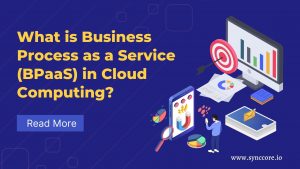Cloud Computing Business Agility: Our current world is highly competitive; an organization must be agile to compete effectively. Using the cloud can give your organization several opportunities to improve business agility.
According to a 2022 study by NewVantage Partners, the cloud continues to drive business agility. According to the survey, cloud migration is the third-highest data investment priority for businesses in 2022. Without a doubt, business agility is critical to the success of your organization.
Business agility is a company’s ability to respond quickly and cost-effectively to market changes and emerging opportunities with innovative business solutions.
Here are a few quick ways the cloud can help your organization improve its business agility.
Table of Contents
Cloud Computing Business Agility

Flexibility and scalability
Thanks to the cloud’s pay-per-use flexibility, end-users can scale quickly based on business demands. Testing and development, load testing, seasonal spikes in traffic, a new application, and so on are typical workloads that necessitate on-demand scalability.
No need to wait for hardware and software resources
Everything is accessible via the Internet, thanks to the cloud. Traditional business processes can take weeks or months to set up hardware and develop software. On the contrary, such a setup can be ready in the cloud in hours.
Faster innovation
Cloud computing enables businesses to support a faster rate of product development and marketing programs that better align IT infrastructure and management costs with business goals and objectives.
The cloud’s flexible infrastructure translates into businesses enhancing their agility rather than being change inhibitors. It enables organizations to scale up or down their operations to support business objectives such as attracting and retaining new customers or shortening the time-to-market for new services.
Pay for the number of resources you use and need
Cloud computing, undoubtedly, improves the efficiency and speed of business processes and transactions.
The cloud computing pay-per-use model allows subscribers to rent or subscribe to platforms, systems, infrastructure, and data services that can be rapidly scaled up or down based on demand.
This eliminates the risk of wasting money on insignificant or less valuable resources required to store the entities themselves.
Automation
Through automation, cloud computing makes provisioning, de-provisioning, and re-deploying resources easier. Cloud computing’s efficiency reduces the time an IT systems administrator must spend managing and supporting infrastructure.
Faster time-to-market
Cloud computing enables businesses to significantly reduce the time it takes to provision and de-provision IT infrastructure, thereby accelerating the delivery of IT projects critical to revenue growth or cost reduction. A physical server can take days or weeks to procure and configure, whereas a cloud server can be done in minutes.
Business agility is critical to the survival of many businesses, and cloud computing can help a company get there. What are your opinions?
If you require cloud services, please get in touch with us at [email protected] or visit our website at www.synccore.io.
Read More:
Cloud Services for Business Continuity and Disaster Recovery



